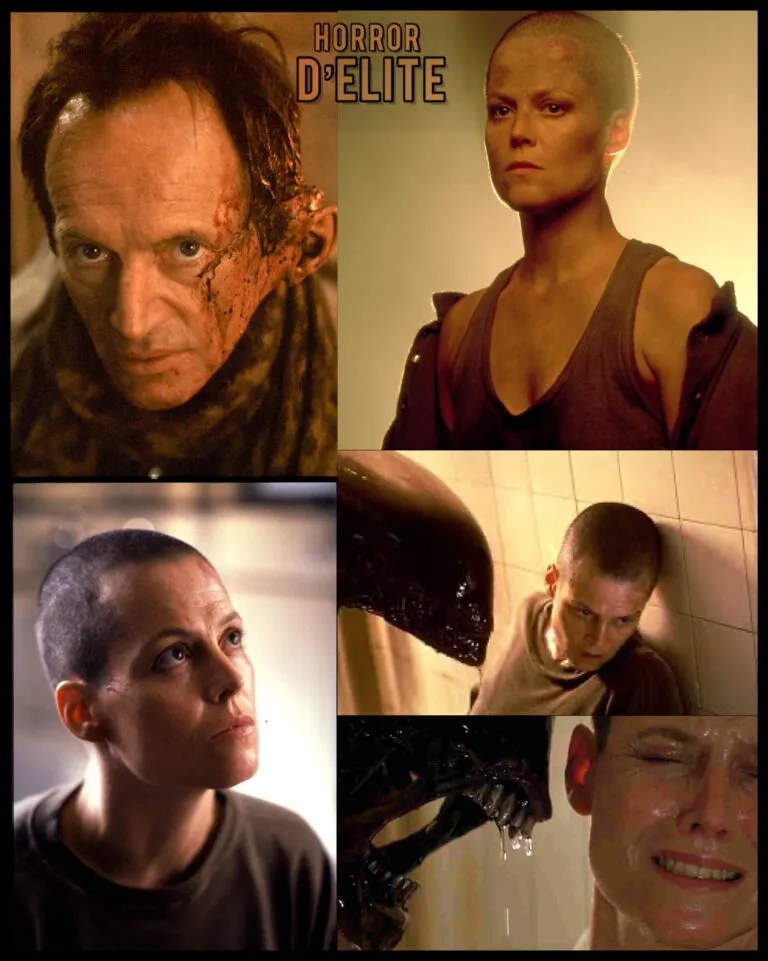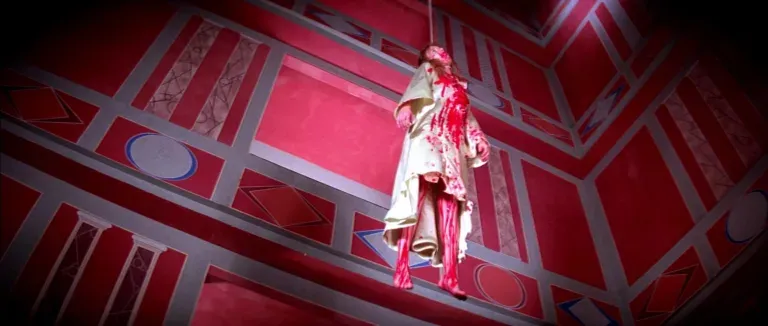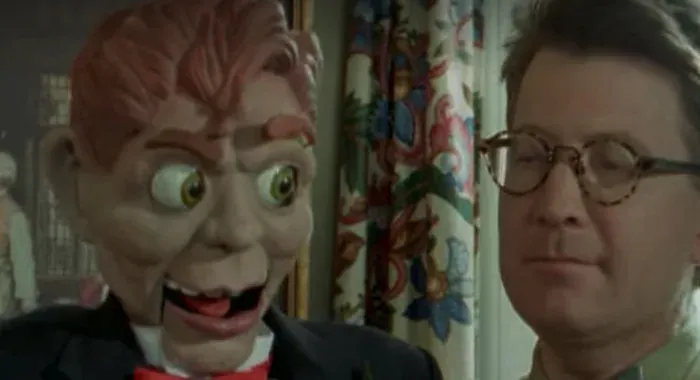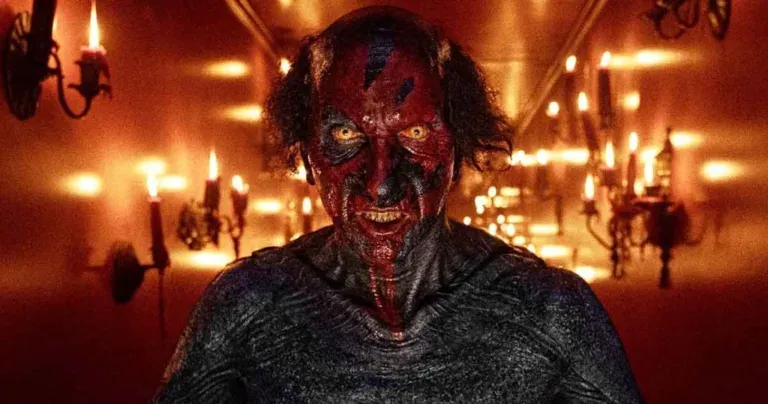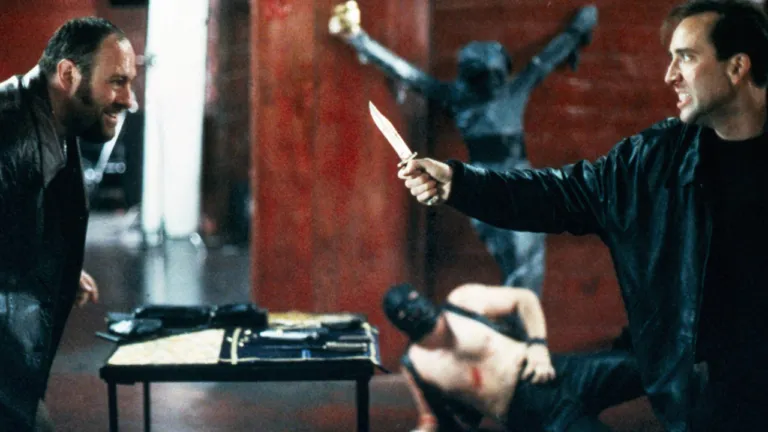A Nightmare on Elm Street
A Nightmare on Elm Street
Wes Craven – 1984.
The film follows the story of a group of teenagers, including the protagonist Nancy Thompson (played by Heather Langenkamp), and her friend Glen (Johnny Depp), who begin to experience terrifying nightmares involving a man with a disfigured face and razor-bladed gardening gloves. This man is Freddy Krueger (played by Robert Englund), a serial killer who was burned alive by an angry mob years earlier, after being released by the police due to a technicality in the trial.
What makes Freddy particularly frightening is that he attacks his victims in their dreams, but death in the dream also translates to real-life death. Therefore, the protagonists find themselves in a situation where they must try to stay awake and escape Freddy in their nightmares to survive.
As the story unfolds, Nancy’s friends begin to die one by one in their nightmares. This creates increasing tension and a sense of desperation as Nancy tries to find a way to stop Freddy. With the help of her father, a police officer played by John Saxon, Nancy discovers the truth about Freddy Krueger and his dark past and ultimately confronts him to defeat him once and for all.
The film has a dark and eerie atmosphere, with distinctive production design for Freddy Krueger’s lair, an old dilapidated house with walls lined with rusty sheet metal and dripping ceilings. Special mention also goes to Charles Bernstein’s soundtrack, which helped create a sense of tension and suspense throughout the film.
“A Nightmare on Elm Street” has had a significant impact on popular culture and has given rise to one of the most recognizable horror icons in cinema history: Freddy Krueger. Since then, Freddy’s character has become the focus of a long series of sequels and even a remake, as well as numerous books, comics, and video games. It is evident that the success of this work and the saga itself is largely due to Robert Englund’s memorable portrayal of Freddy Krueger and, of course, Wes Craven’s visionary talent in creating the character.
Trivia
According to the director, Nightmare was inspired by a real-life event: some young boys were found dead. The autopsy certified that the deaths occurred during the REM phase of sleep.
The name Fred Krueger was dictated to the director by childhood memories: a bully with this name often tormented young Craven. The appearance, instead, given by the red-green striped sweater, was suggested by the look of a real vagrant.
A Nightmare on Elm Street represents the first activity of the newborn New Line Cinema, later a famous horror film production company.
The choice of red and green stripes for Freddy’s sweater is due to the fact that the two colors create a very disturbing chromatic discord from a perceptual point of view.
“The boogeyman is not dead, he has claws like a crow, his voice is scary, grab the cross right away. Open your eyes, stay awake, don’t sleep tonight…”
While during the film he says:
“The boogeyman, the dead man, has claws like a crow, his voice is scary, grab the cross right away…”
Among the more than 200 actresses who auditioned for the role of protagonist Nancy were:
Jennifer Grey
Demi Moore
Courtney Cox
Tracey Gold
Robert Englund cut himself while trying on Freddy’s glove for the first time.
The film narrowly saved New Line Cinema from bankruptcy, and was jokingly dubbed “The house that Freddy built”.
The film required over 500 gallons of fake blood.
Robert Englund’s makeup required three hours per session.
Wes Craven got the basic idea for the film by reading a series of articles in the Los Angeles Times that unfolded over three years about a group of Southeast Asian refugees from the Hmong tribe, many of whom died from the convulsions of horrible nightmares. The group reached the United States escaping the homicidal dictatorship of Pol Pot, and not even a year after their arrival, three of them died in almost identical situations – the youngest and healthiest among them had nightmares after which he refused to sleep for as long as possible. When he collapsed from exhaustion due to prolonged sleep deprivation, he woke up screaming, only to die shortly after. The autopsy results did not report heart attacks, poisonings, or other anomalies. They simply went out abruptly. It was the inability to trace the cause of death that intrigued Craven very much. Since then, medical authorities have called the phenomenon Asian Death Syndrome, a variant of the Sudden Unexpected Death Syndrome and Brugada Syndrome.
All the shots of the boiler room took place in the basement of the Lincoln Heights prison in Los Angeles, condemned for asbestos pollution shortly after the end of filming.
The idea of the glove was Craven’s, who wanted to give the villain an exclusive, hitherto unseen weapon that could be manufactured cheaply and was not difficult to use or transport. At the time, he was studying the primary fears rooted in the collective subconscious of all races and cultures, and discovered that one of these was the attack of animals with claws. At that very moment, he saw the cat show him the claws and the two aspects merged offering him the idea, although in the script the blades were fishing knives, not vegetable knives.


